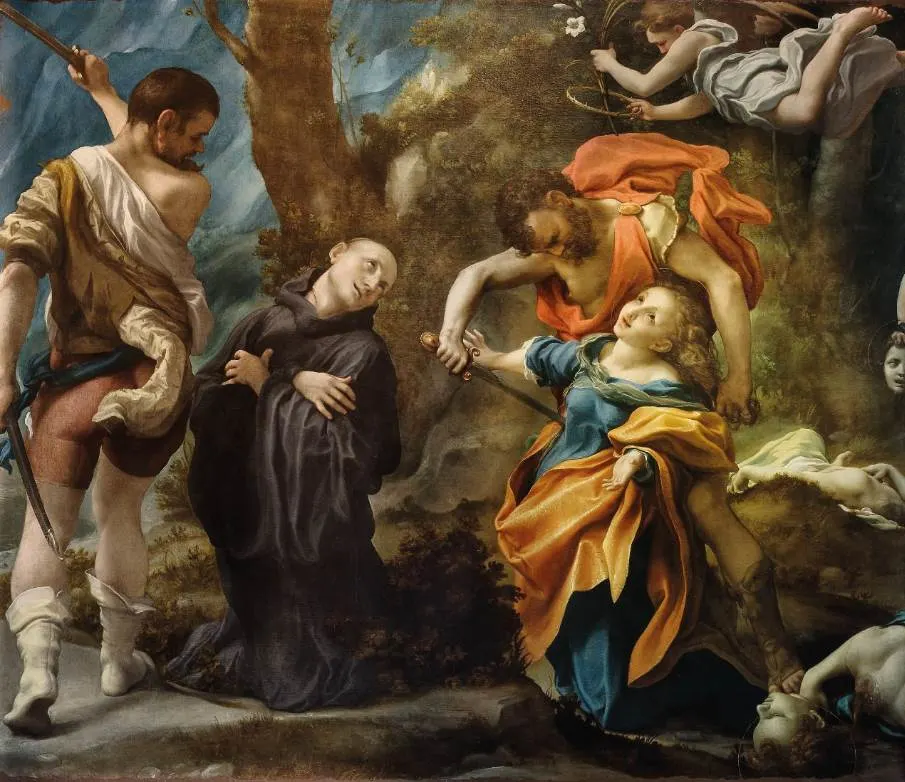Parma is a city in the central part of northern Italy. It’s the second-most populous city in the Emilia-Romagna Region and it’s home to a museum that features numerous masterpieces.
The Galleria Nazionale di Parma is a large museum in the heart of the city, just east of the Ducal Palace and huge Ducal Park.
It features a collection of Italian paintings that were established during the Renaissance by the Farnese family, more specifically, Pope Paul III and Cardinal Alessandro Farnese.
This collection was moved to Parma in the mid-17th century and formed the base of the Parmesan collection of fine art.
Housed in the amazing Pilotta Palace, the museum displays Italian artworks created between the 12th and 18th centuries.
Let’s take a closer look at some of the most famous paintings at the Galleria Nazionale di Parma.
1. La Scapigliata – Leonardo da Vinci
- Date created: 1506-1508
- Dimensions: 24.7 × 21 centimeters (9.7 × 8.3 inches)
La Scapigliata is an unfinished painting by Leonardo da Vinci (1452-1519), one of the greatest Renaissance masters in history. The attribution of the painting to Leonardo has been contested for centuries, but the incredible quality of this works leaves little doubt it was his creation.
It’s one of the prime examples of the Sfumato technique he devised which focuses on the smooth transition between colors. He also used this trademark technique to paint the Mona Lisa, a painting he worked on around the same time.
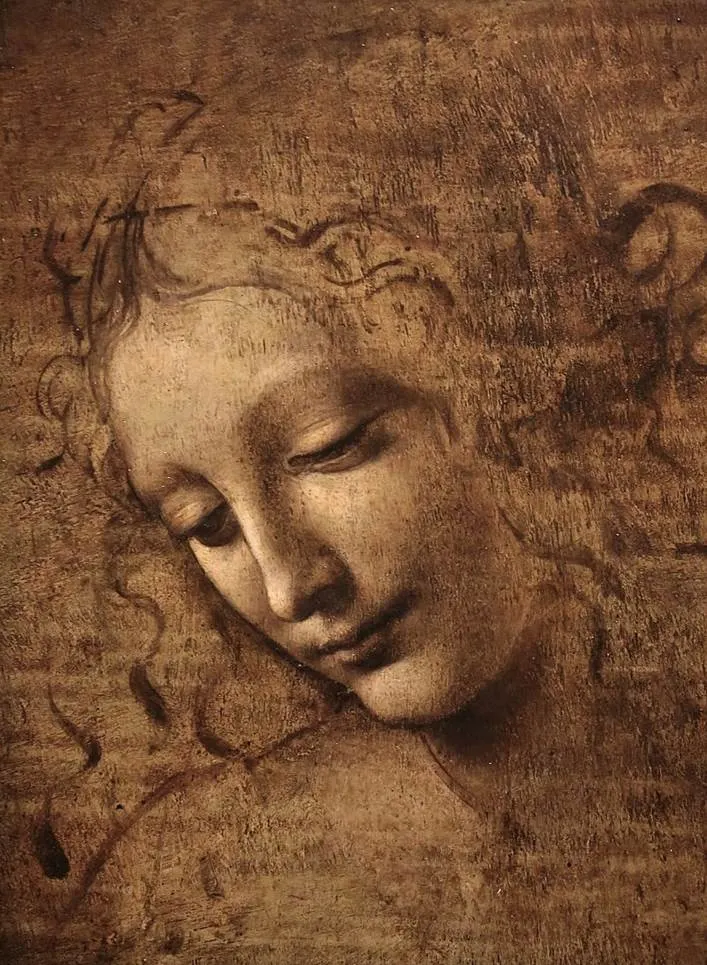
2. Turkish Slave – Parmigianino
- Date created: 1533
- Dimensions: 67 × 53 centimeters (26 × 21 inches)
Turkish Slave is the title of a painting by Parmigianino (1503-1540), the nickname of Francesco Mazzola, one of the most renowned artists from the city of Parma in history. He was a Mannerist artist who produced art in an era also known as the “Late Renaissance.”

He completed some of the most notable Mannerist paintings of the 16th century and this work is a prime example. The painting got its name because of the remarkable headdress that the woman is wearing, which was in fact a fashionable hat that was worn by noblewomen at the time.
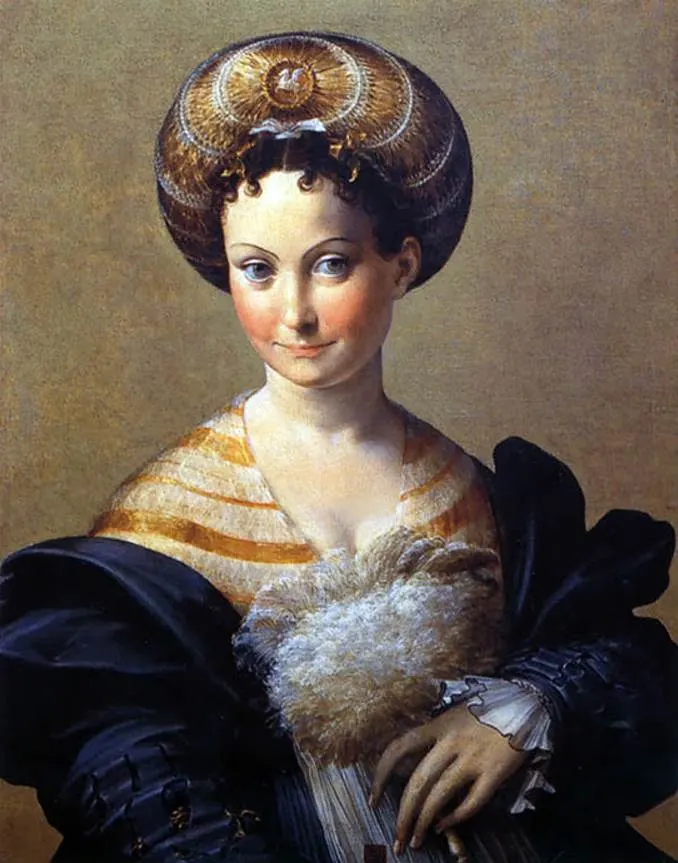
3. The Lamentation of Christ – Correggio
- Date created: 1524
- Dimensions: 159 x 184 centimeters (62.5 x 72.4 inches)
The Lamentation of Christ is a painting by Antonio da Correggio (1489-1534), one the most famous artists of the Parma School during the High Renaissance. His style was so advanced for his time that it served as an inspiration for artists in the following decades and even centuries.
This work depicts a typical lamentation scene in which friends and family members of Jesus Christ mourn over his dead body following his crucifixion. This painting was commissioned by a local nobleman to decorate his chapel inside the church of San Giovanni Evangelista in Parma.
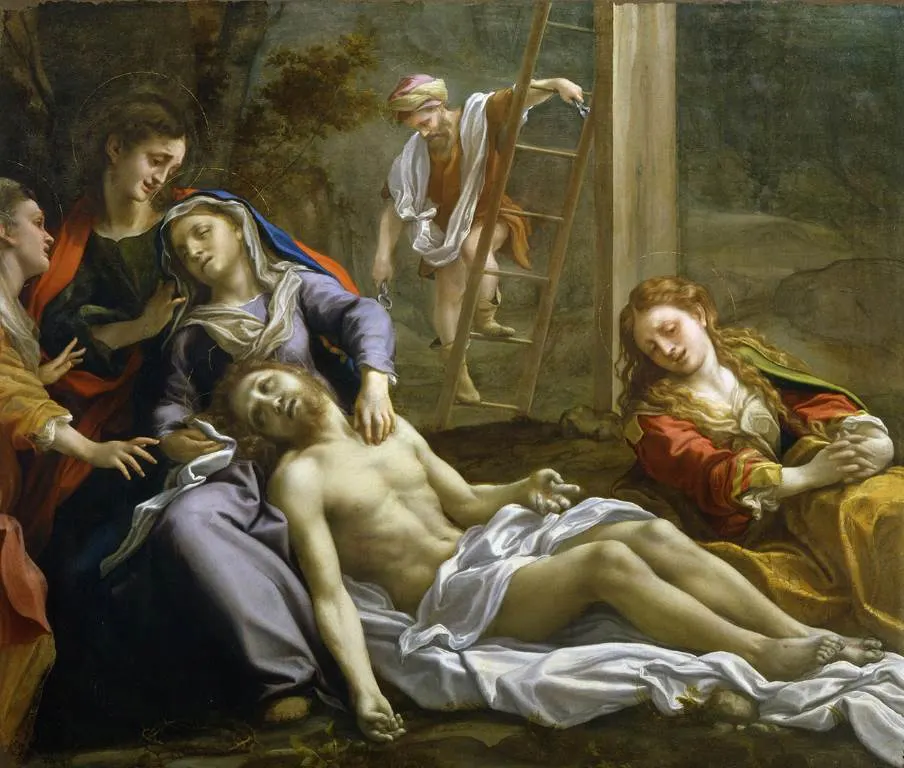
4. Parma Embraces the Young Alessandro Farnese – Girolamo Mazzola Bedoli
- Date created: 1556
- Dimensions: 150 x 117 centimeters (59 x 46 inches)
Parma Embraces the Young Alessandro Farnese is the title of a painting by Girolamo Mazzola Bedoli (1500-1569), another Italian artist who was active during the Mannerist era. It’s an allegorical painting in which the city of Parma embraces Alessandro Farnese, Duke of Parma (1545-1592).
This painting depicts the future Duke of Parma when he was a young teenager. He was not only the Dule of Parma between 1586 and his death in 1592 but also the Governor of the Spanish Netherlands between 1578 and 1592.
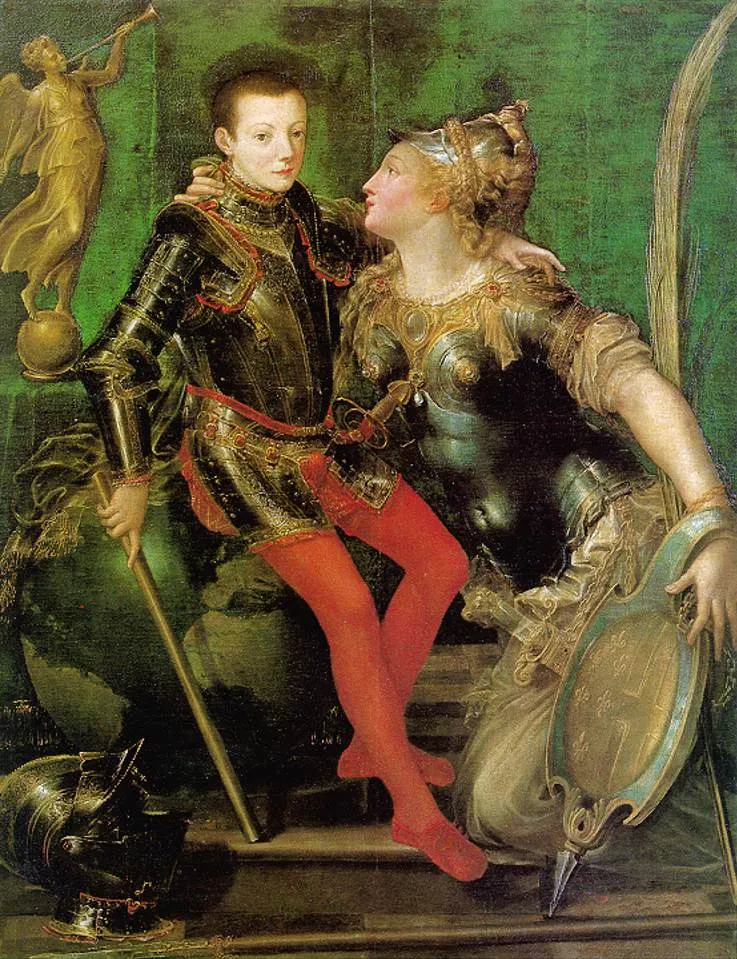
5. Pietà with Saints Clare, Francis, and Mary Magdalene – Annibale Carracci
- Date created: 1585
- Dimensions: 373.8 x 239.7 centimeters (147.16 x 94.3 inches)
Pietà with Saints Clare, Francis, and Mary Magdalene is a monumental work of art by Annibale Carracci (1560-1609), one of the greatest exponents of the Bolognese School of painting. It was commissioned to decorate the Capuchin church in Parma and was one of the first works he completed outside of his native city.
The members of the Farnese family became great patrons of Carracci when he moved to Rome. He decorated their palace with the incredible fresco titled “The Loves of the Gods.” This work depicts a deposition and mourning scene in the typical Baroque style.
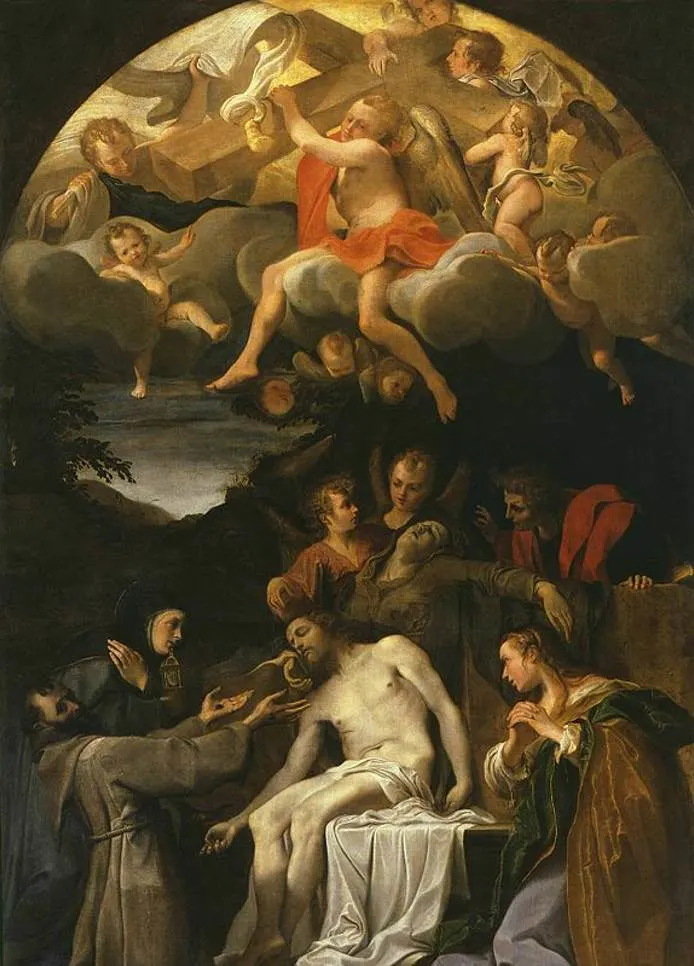
6. Madonna and Child – Anthony van Dyck
- Date created: 1621-1625
- Dimensions: 62.5 × 52.5 centimeters (24.6 × 20.7 inches)
Madonna and Child is the title of several paintings of the same subject by Anthony van Dyck (1599-1641), one of the greatest Flemish artists in history. He spent most of his professional career abroad and lived in Italy between 1621 and 1625 where he completed this series.
The color scheme of this work was inspired by the paintings of Titian. The use of chiaroscuro was influenced by the Caravaggio paintings he came across during his time in Italy. This work was purchased by Marie Louise I (1791-1847), the Duchess of Parma at the time, in 1820.
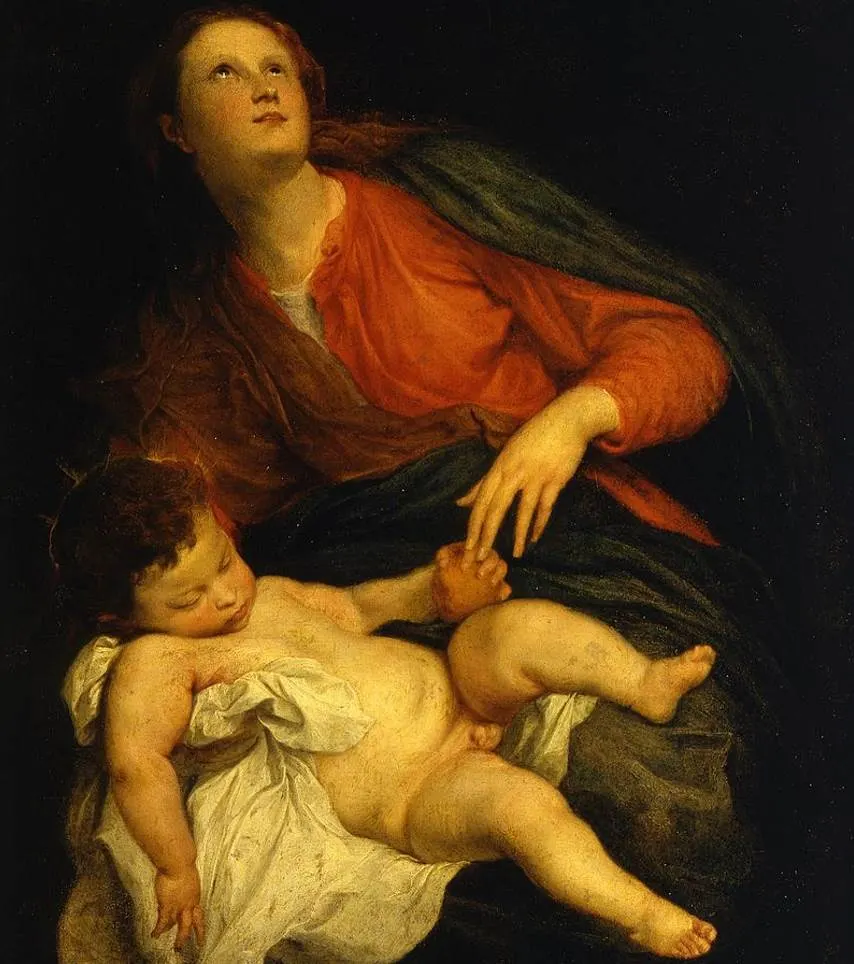
7. Madonna and Child with Saint Jerome and Mary Magdalene – Correggio
- Date created: 1528
- Dimensions: 235 × 141 centimeters (93 × 56 inches)
Madonna and Child with Sants Jerome and Mary Magdalene is a painting also sometimes referred to as the “Madonna of Saint Jerome.” It’s another masterpiece by Correggio that was highly influential in the 16th century because of its remarkable color scheme.
It’s another painting that was commissioned to decorate a chapel in a church in Parma, this one the church of Sant’Antonio Abate. It was moved to the Cathedral of Parma in the 18th century before being purchased by the Duchy of Parma. It entered the collection of the Galleria Nazionale of Parma shortly after.
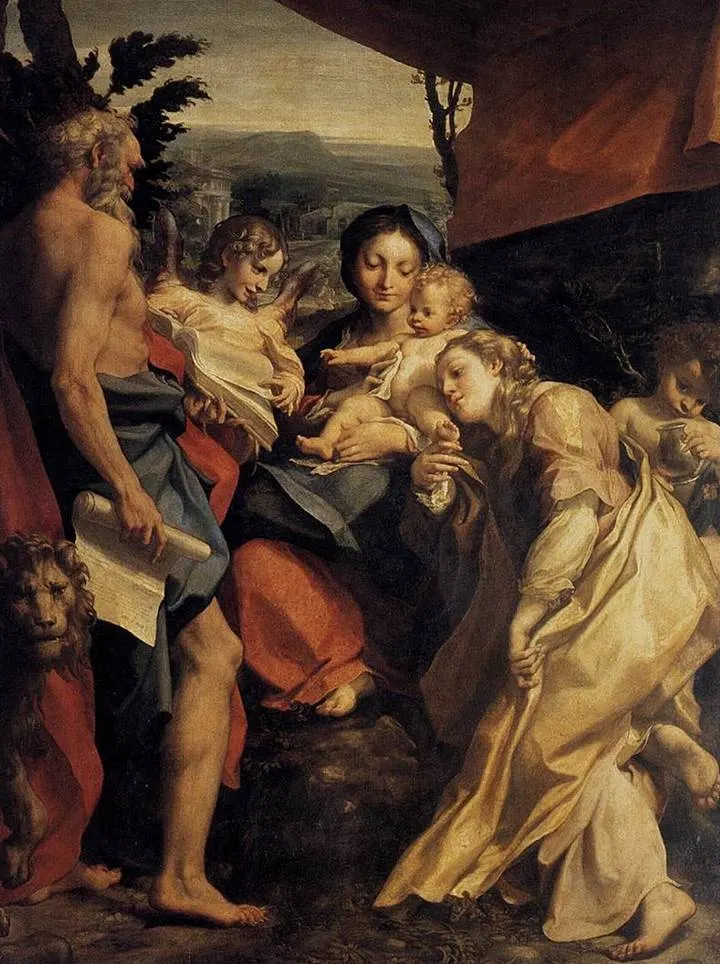
8. Christ Healing the Blind – El Greco
- Date created: 1573
- Dimensions: 50 × 61 centimeters (20 × 24 inches)
Christ Healing the Blind is the title of a painting by El Greco (1541-1614) and the third he completed on this subject. He already painted a similar work titled “Healing of the Man Born Blind” in 1567, a work that is part of the collection of the Gemäldegalerie Alte Meister in Dresden. Another version painted in 1570 is part of the collection of the MET in New York City.
What’s remarkable is that this painting is believed to have been commissioned by Cardinal Alessandro Farnese (1520-1589) while El Greco was living in Rome. He first moved from his native Crete to Venice and later to Rome in 1570. This work features the distinctive style that made El Greco such an influential artist.
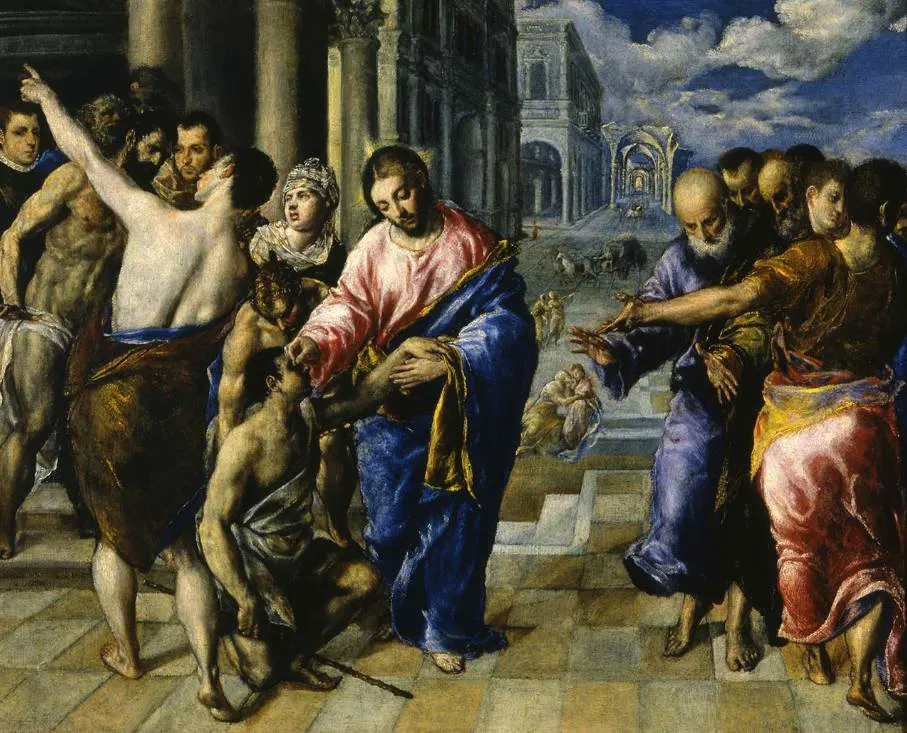
9. Suzanna and The Elders – Guercino
- Date created: 1650
- Dimensions: 133 x 181 centimeters (52.3 x 71.2 inches)
Suzanna and The Elders is a painting by Giovanni Francesco Barbieri (1591-1666), a Baroque artist better known by his nickname Guercino. He was active in both Rome and Bologna and produced Baroque paintings that feature both a strong sense of Realism and classical elements.
The subject of this painting was a popular one as it depicts Suzanna who is being spied on by two elderly men. She tries to escape and is later accused of adultery but ends up being cleared of all charges.
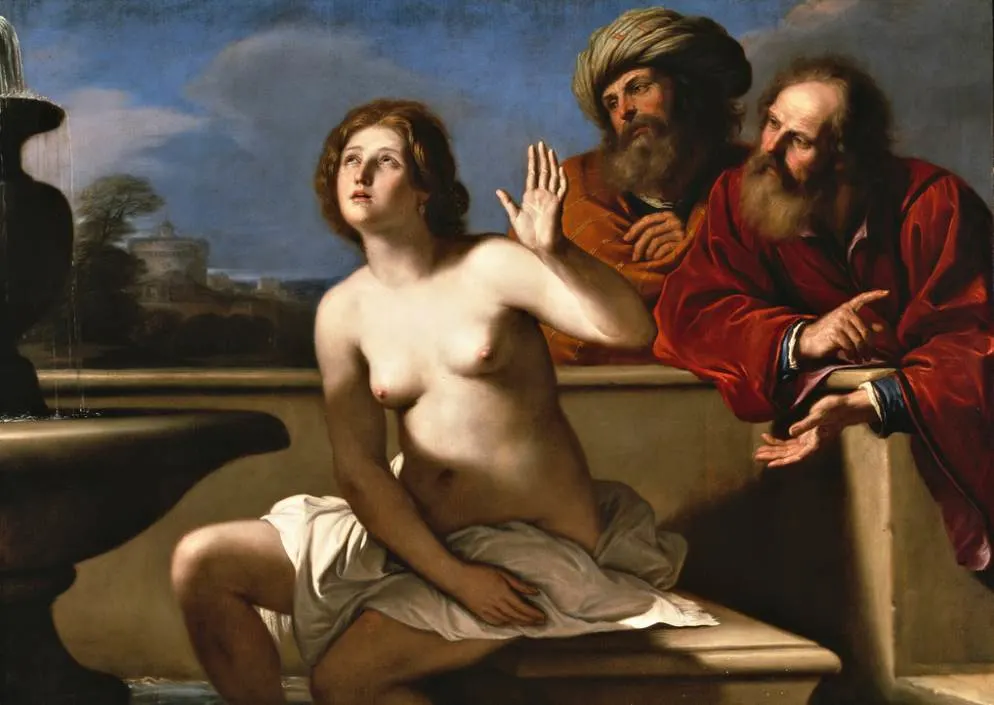
10. Martyrdom of Four Saints – Correggio
- Date created: 1524
- Dimensions: 160 x 185 centimeters (62.9 x 72.8 inches)
The Martyrdom of Four Saints is the title of yet another amazing painting by Correggio, an artist who is well-represented at the Galleria Nazionale di Parma in his native city. It’s another work that was commissioned to decorate a chapel inside the church of San Giovanni Evangelista in Parma.
As the title of this work suggests, it depicts the gruesome execution of 4 Christian martyrs in the 4th century. Placidus and his sister Flavia are about the be slain while the decapitated heads of the Roman siblings Eutychius and Victorinus lie behind them.
